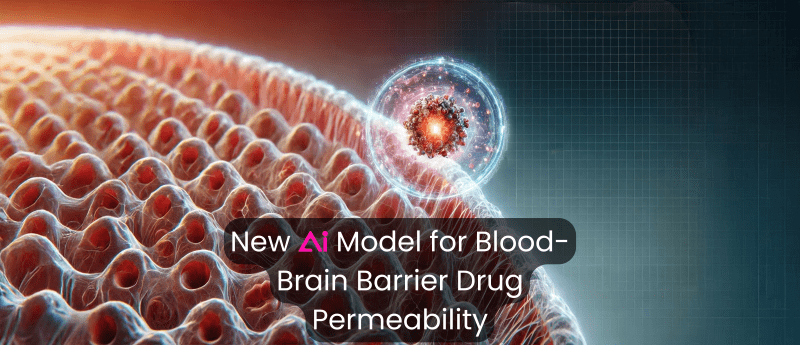1910 Genetics Launches Advanced AI Model for Blood-Brain Barrier Drug Permeability

Boston-based biotechnology company 1910 Genetics has launched CANDID-CNS, an advanced AI model designed to predict the permeability of small molecule drugs through the blood-brain barrier (BBB).
This breakthrough technology significantly outperforms the industry standard for identifying drug candidates capable of treating diseases of the central nervous system (CNS).
CANDID-CNS achieved an 83% success rate in predicting brain penetration of small molecules, a substantial improvement over the 64% success rate of the current industry benchmark.
This model is part of 1910’s multi-AI agentic system, developed to tackle the challenges of drug discovery for both small and large molecules.
The blood-brain barrier presents a significant obstacle in CNS drug development, as only 2% of small molecule drugs can cross it. This limitation makes it difficult to develop effective treatments for CNS disorders.
CANDID-CNS, however, leverages graph neural networks (GNNs) and attention mechanisms, allowing it to better understand the chemical properties of compounds that can penetrate the BBB.
GNNs are specialized neural networks for data in graph form, where nodes are items and edges show their relationships. They work by passing information through these connections, helping them recognize patterns and relationships in complex, linked data like molecules or social networks.
Jen Nwankwo, CEO of 1910 Genetics, said the implications of this work for both neuroscience drug development and AI as a whole are immense.
“One of the challenges of building AI models in pharma is that multiple metrics are used to assess the same or similar parameters. In this case, the pharma industry uses both logBB and Kp,uu to assess brain distribution. Most studies have used either logBB or Kp,uu but not both, thus making dataset generation and AI model training difficult.”
LogBB measures the ratio of a drug’s concentration in the brain to its concentration in the blood, indicating its ability to cross the blood-brain barrier. Moreover, Kp,uu assesses the active drug concentration ratio between brain and blood, providing insight into drug effectiveness at the target site.
However, she explains, 1910’s ITO platform overcame barriers in data scarcity, model training, and computing power to build CANDID-CNS, which is trained on site-of-action data, a clinical and real-world evidence endpoint, for which logBB and Kp,uu are measured to predict.
“Impressively, we show that regardless of metric (logBB and Kp,uu), CANDID-CNS maintained its state-of-the-art performance compared to industry benchmarks. We are energized by how CANDID-CNS and the broader 1910 ITO platform will enable pharmaceutical companies to overcome the high clinical failure rate of neuroscience therapeutics.”
Jesse Collins, lead author of the study and AI research scientist at 1910 Genetics, also emphasized the importance of AI in overcoming such challenges with the BBB.
“Traditional preclinical models often fail to identify compounds likely to succeed in clinical trials. CANDID-CNS offers a solution, with predictive accuracy far beyond industry norms,” she said.
The anatomy and physiology of the blood-brain barrier make it challenging to develop therapeutics for diseases of the central nervous system, and consequently only two percent of small molecule drugs can cross the BBB.
“This makes drug development for CNS diseases difficult, as traditional preclinical models are unable to routinely identify molecules that would have a high probability of success in the clinic. This challenge underscores the unmet need and opportunity for AI, which our development of CANDID-CNS is bringing to fruition.”
1910 Genetics currently offers its ITO platform to pharmaceutical and biotechnology companies through co-discovery, co-engineering, and platform-as-a-service models.